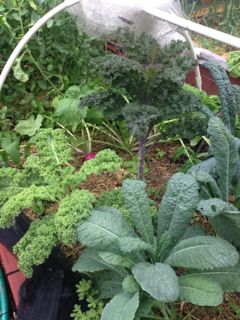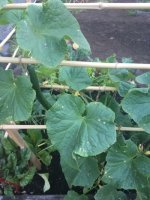Your Soil pH

Soil pH is a numerical symbol that tells how much acid or alkaline is in your soil. The pH scale range is zero (which is acidic) to 14 (which is alkaline) with 7 being neutral.
Most vegetables grow best between 6 and 7, which is slightly acidic.
If soil is too acidic it will be infertile; if too alkaline the soil becomes toxic and will poison plants. Areas with lots of rainfall likely have acidic soil as rain tends to wash away calcium and magnesium as well as other nutrients.
Areas with less rain are usually more alkaline.
List Vegetable with ideal pH ranges
- Asparagus 6.0-8.0
- Bean, pole 6.0-7.5
- Beet 6.0-7.5
- Broccoli 6.0-7.0
- Brussels Sprouts 6.0-7.5
- Carrot 5.5-7.0
- Cauliflower 5.5-7.5
- Celery 5.8-7.0
- Chive 6.0-7.0
- Cucumber 5.5-7.0
- Garlic 5.5-8.0
- Kale 6.0-7.5
- Lettuce 6.0-7.0
- Peas 6.0-7.5
- Peppers 5.5-7.0
- Potato 4.8-6.5
- Pumpkin 5.5-7.5
- Radish 6.0-7.0
- Spinach 6.0-7.5
- Squash, crookneck 6.0-7.5
- Squash, Hubbard 5.5-7.0
- Tomato 5.5-7.5
If you have acidic soil pH:
Lime is used to increase the pH if you have acidic soil. There are two basic types of lime - agricultural lime which only contains calcium and dolomite lime which contains both calcium and magnesium. Most home gardeners can usually use either; dolomite is often cheaper and more accessible. An in depth soil test will tell you if your soil already has optimum magnesium and if it does it would be best to use the agricultural lime.
How much do you add in? These are approximate amounts to raise the pH by 1 point.
- Sandy soil add 5 pounds per 100 square feet
- Loam soil add 6 pounds per 100 square feet
- Silt or Clay soil add 8 pounds per 100 square feet
If you have alkaline soil pH:
To correct soil that is too alkaline you will need to add powdered sulfur.
How much do you add in? These are approximate amounts to lower the pH by 1 point.
Here is more information on the above types of soil.
Both lime and sulfur are considered soil conditioners. It is important to add either separately from soil fertilizers; a few weeks to a month before is best. When adding lime and sulfur to your garden beds make sure you rake it evenly into the soil. If your soil is extremely acidic or alkaline make an application in the spring and another one in the fall so as not to give the soil too much all at once. It can take a few seasons to get to the optimum number you want.
Return from soil pH to Vegetable Gardening Tips
Return to Your Vegetable Gardening Helper homepage
Recent Articles
-
Vegetable Gardening Frustrations: Lessons for a Better Harvest
Oct 29, 24 07:37 PM
Every vegetable gardener knows that while the rewards are sweet, the vegetable gardening frustrations can be a bit bitter. -
Small Space Vegetable Gardening
Sep 23, 24 05:06 PM
Small Space Vegetable Gardening - Tips for growing vegetables in small spaces. -
Why Fall Gardening?
Aug 16, 24 12:24 PM
Fall Gardening: A guide to a Bountiful Harvest.




